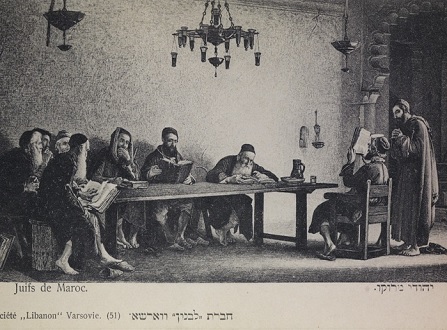Jewish Communities
The experiences of the Jewish people throughout history led to its dispersal throughout the world and the establishment of Jewish communities in many different countries. On the eve of World War II, the size of the world’s Jewish population was at its peak, with an estimated 16.7 million people. About 80 years later, the number of Jews in the world stood at around 14.8 million, including about 8.1 million living in the Diaspora. The largest community outside of Israel is in the United States and numbers about 5.7 million people.
Over the generations, Jewish communities became settled in their lands, their experiences ranging from significant prosperity as well as cultural, economic, and religious growth to various manifestations of religious hatred and antisemitism. Local Jewish leadership developed over time, with each community also cultivating its own distinctive Jewish heritage, expressed in a shared communal life, education, unique customs, halakhic rulings and extensive cultural and artistic activity.
The History of Jewish Immigration
The broad dispersal of Diaspora Jewry stemmed from many events in Jewish history, beginning with the Assyrian exile in the eighth century BCE and the Babylonian exile in the sixth century BCE. Another wave of Jewish immigration around the world was brought about by the Arab-Muslim conquest of the Land of Israel in the seventh century CE. Centuries later, following the expulsion of the Jews from Spain in the 15th century, the Jews of Spain and Portugal settled in many different places, including North Africa, Bulgaria, France, Italy and the Middle East.
In the late 19th and early 20th centuries, millions of Jews emigrated from Eastern Europe, mainly to the United States and Western Europe, and some to the Land of Israel, Australia, and South Africa. In the first half of the 20th century, about 200,000 Jews immigrated to Ottoman and Later Mandatory Palestine. Most of these came while fleeing antisemitism and the Nazi threat in Europe. Several thousand came from Arab countries. Following the end of WWII, survivors of the Holocaust joined their numbers. After the establishment of the State of Israel, hundreds of thousands of Jews immigrated from Islamic countries and Europe.
The mass immigration in the 20th century initiated an unprecedented encounter between the myriad communities of the Jewish Diaspora, after long years of exile. This ingathering enabled a gradual acquaintance of all parts of the Jewish people with the stories and cultures of its varied communities.
Jewish Communities in the National Library Collections
The collections of the National Library of Israel contain an abundance of items that offer a glimpse into the lives of hundreds of Jewish communities in dozens of countries. Many of the historical materials are preserved in the collections of the Central Archives for the History of the Jewish People that operate through the Library. These collections contain fascinating items, some of them rare, including community ledgers known as pinkasim, documents and photographs, as well as files and lists of materials from Jewish and non-Jewish archives. The various sources reveal the stories, experiences, customs, cultures and creativity of these communities as well as the attitudes of the surrounding environments toward them.

 Sign in with Google
Sign in with Google
 Sign in with Facebook
Sign in with Facebook


